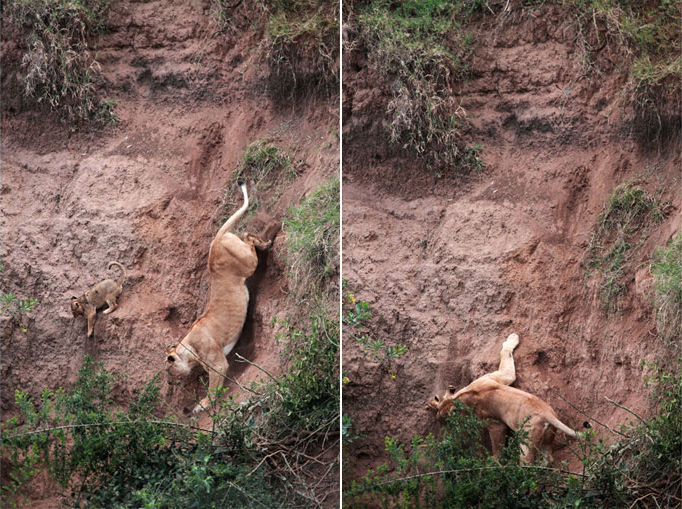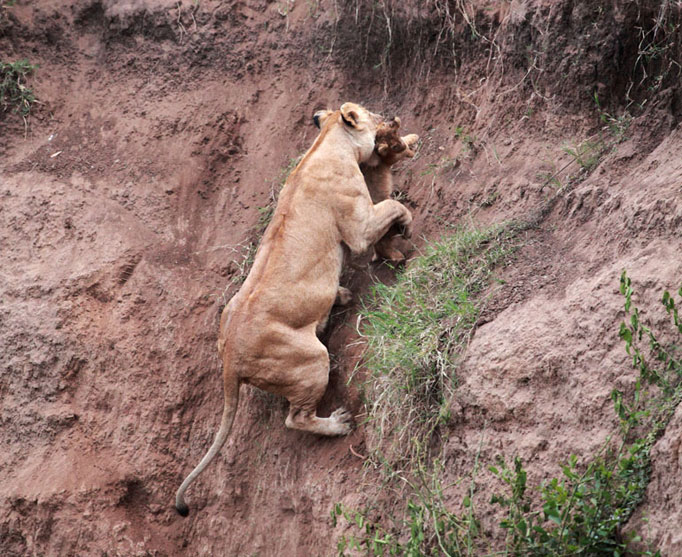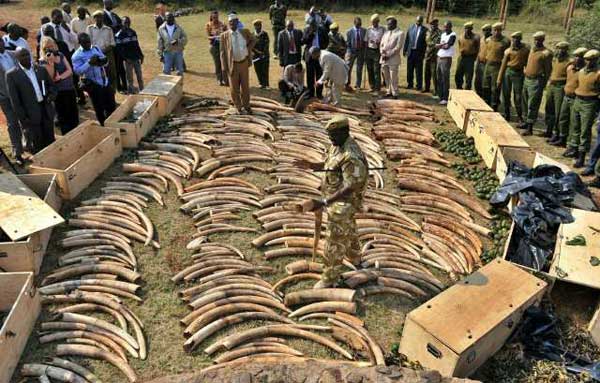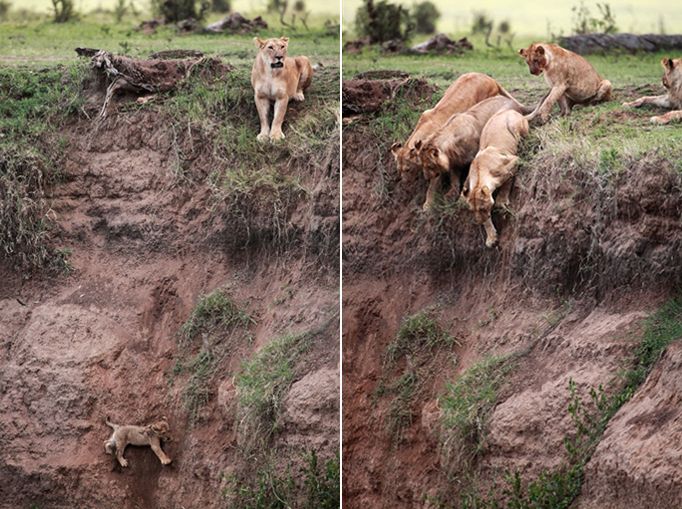
mother deliberates from the top of the river bank whilst the cub calls for help and hangs on tight (photo by Jean-Francois Largot)
Clinging on for dear life to the side of a vertical cliff, the tiny lion cub cries out pitifully for help.
His mother arrives at the edge of the precipice with three other lionesses and a male. The females start to clamber down together but turn back daunted by the sheer drop.
Eventually one single factor determines which of them will risk her life to save the youngster – motherly love.
Slowly, agonisingly, the big cat edges her way down towards her terrified son, using her powerful claws to grip the crumbling cliff side.
One slip from her and both animals could end up dead at the bottom of the ravine.
Just as the exhausted cub seems about to fall, his mother circles beneath him and he is snatched up in her jaws.
She then begins the equally perilous journey back to the top. Minutes later, they arrive and she gives the frightened creature a consoling lick on the head.
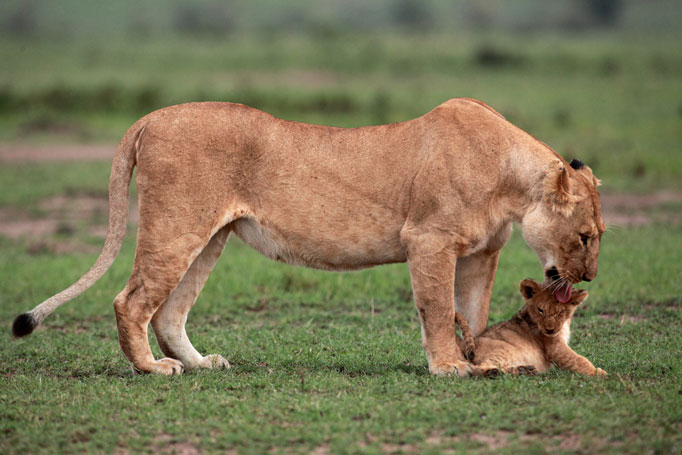
motherly love: The mother gives her son a lick to say that all is well in the pride following the drama (photo by Jean-Francois Largot)
The dramatic rescue, captured by wildlife photographer Jean-Francois Largot, was played out in Kenya’s Masai Mara game reserve.
Despite the presence of wardens to deter poachers, day-to-day life for the lions is not without its dangers … as the cub learned the hard way.
[source: http://www.dailymail.co.uk/news/article-2041813/Lion-cub-saved-mum-cries-pitifully-help-caught-camera.html]
